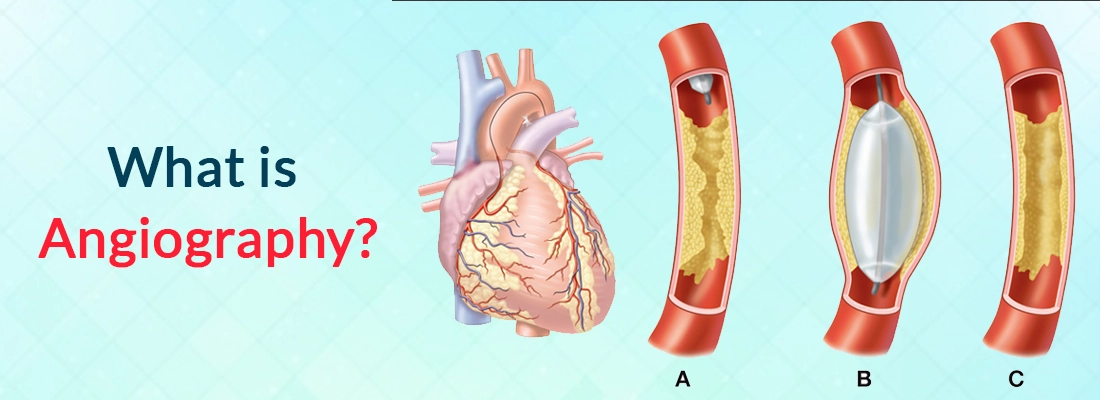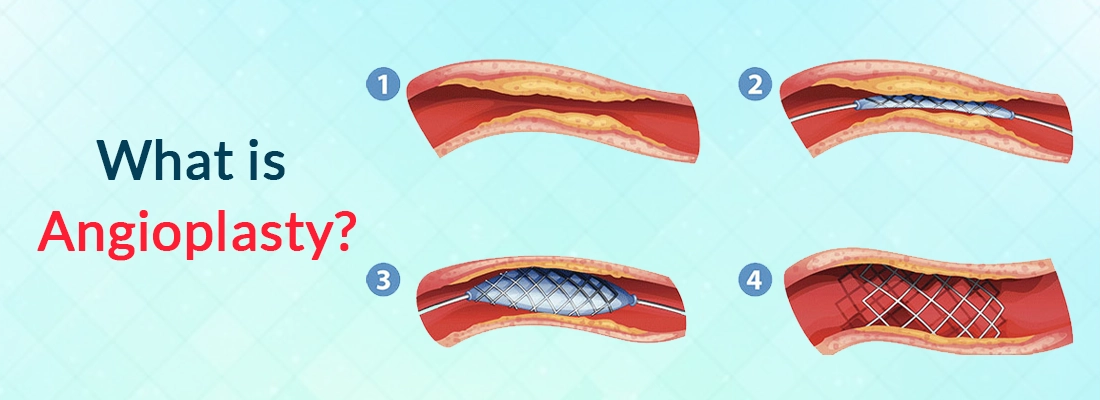
Have you been asked to have an angiography scan done? and you don't know whether angiography and angioplasty are the same? The blog below explains the difference between the two and their individual significance.
The heart related diseases otherwise called the cardiovascular diseases, are the most common and major reason for mortality. The advanced technology helps determine and treat various conditions of the heart. Two of them are angiography which is of diagnostic value and angioplasty with its surgical/treatment value.
Difference Between Angiography And Angioplasty
- The difference between the two stands primarily in their use. The angiography is a test, diagnostic test and angioplasty is a surgical procedure/treatment option.
- An angiogram is a diagnostic tool that helps evaluating and understanding the heart conditions which helps deciding the treatment modality. The angioplasty is a procedure that helps improving the blood flow by widening the arteries that are blocked with the help of a stent or balloons
What Is Angiography?

Angiography is a diagnostic procedure that checks the blood vessels for any blockages. The angiography procedure produces scan images of the heart and blood vessels, these scan images are called angiograms. An angiography procedure uses x-rays to produce angiograms
What Is Angioplasty?

In certain heart diseases like coronary artery disease (CAD), blood vessels become narrow due to deposition of a sticky material known as plaque. The plaque is a sticky material which is composed of deposits of calcium, cholesterol or other substances.these deposits start to occlude the arteries with time and can even clog the vessel completely. To remove this sticky material, a procedure called angioplasty surgery is done.
What Are The Uses of Angiography?
This diagnostic imaging is used to diagnose various conditions related to blood vessels like-
- Blockages in the blood vessels such as the vessels of the kidney.
- Myocardial infarction
- Heart attack
- Angina- this is a condition when decreased blood flow to the heart is seen. It often represents a severe chest pain.
- Pulmonary embolism- this is a condition affecting the lungs where a blood clot hampers the blood supply to the lungs
- Atherosclerosis- when narrowing of blood vessels/arteries is present, it is called atherosclerosis. It increases the chances of someone developing a heart attack or stroke.
- Peripheral arterial disease- this is a condition where blood supply to the limbs particularly lower limbs/leg muscles is hampered.
- Brain aneurysm- when a bulge appears in the blood vessels of the brain, it is called a brain aneurysm.
What Are the Uses of Angioplasty?
The angioplasty procedure is suggested by a doctor if-
- The doctor has evaluated the signs and symptoms such as chest pain, decreased blood supply to the heart muscles
- If the angiography revealed blockages in arteries or narrowing in the coronary arteries
- If a patient has had a heart attack or unstable angina, which can be indicative of restricted blood flow.
How is Angiography Procedure Done?
- Your doctor might give you sedative for the procedure
- Local anaesthesia will be given at the area where incision is to be made
- The incision is usually made in groin or wrist area
- The catheter tube is then placed through this incision into your arteries
- The catheter is then advanced to the area which is to be examined.
- The doctor then injects a contrast dye through the catheter as arteries are not visible in the x-ray otherwise
- The whole procedure takes about 10-15 minutes
How is Angioplasty Procedure Done?
- You will be given a local anaesthesia on the area where incision is t be made
- The incision is made and a catheter tube is inserted through this incision into the artery
- The catheter is guided to the area of concern
- Once the blockage is identified, a balloon is advanced to open the vessel.
- The balloon is then inflated and stents are placed. Once stents are positioned, the balloon is deflated and removed.
Risks Associated With Angiography
There are relatively few risks and complications associated with the angiography procedure
- Bruising
- Soreness
- Dizziness
- Allergic reaction due to dye
- Shortness of breath
- Intracranial haemorrhage causing kidney damage
- Stroke
Risks Associated With Angioplasty
The related complications and risks associated with angioplasty are -
- Narrowing of the artery again if the stent was not placed or not laced properly
- Sometimes severe bleeding happens at the site of incision.
- Allergy due to contrast dye
- There are certain cases where plaque/blockage cannot be cleared by angioplasty. In these cases additionally, a bypass surgery is needed.
- Sometimes a rare complication like heart attack, kidney problems, arrhythmias, stroke, coronary artery damage can happen.
Conclusion
Angioplasty and angiography are two techniques that are related to heart/cardiovascular diseases and help in irs care, both of them have their own significance. Angiography is a tool that helps in diagnosis whereas angioplasty helps treat the blockage. Both have significance in restoring proper blood flow to the heart. Both help in maintaining a good lifeahead.









